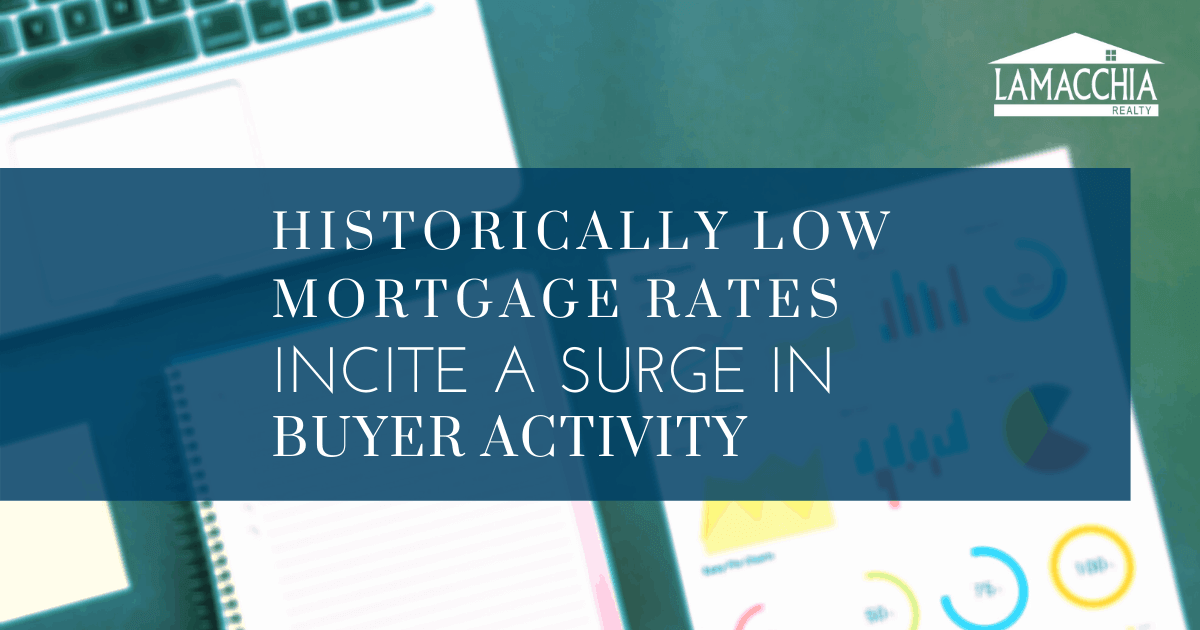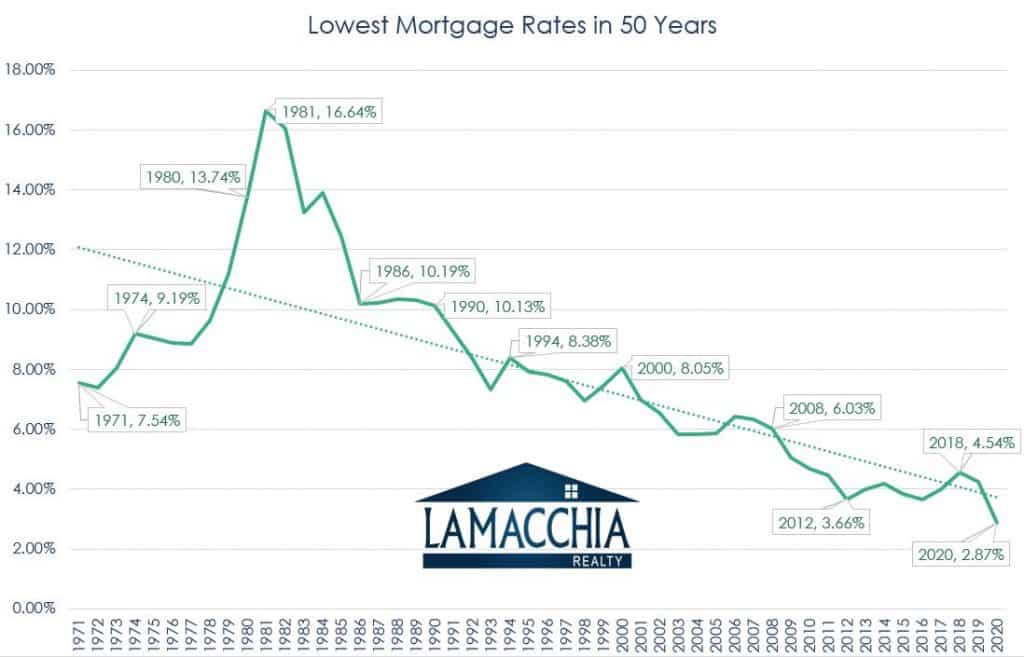

For the first time in almost five decades, the average 30-year mortgage rate fell below 3% this week, even amidst concern regarding the resurgence of the COVID-19 pandemic. In addition to the average 30-year mortgage rate falling, the average 15-year mortgage rate fell to 2.48%, which is the lowest it has been in almost 30 years, see chart below. As a result, mortgage applications are up 19% in what is the ninth week of increased buyer activity over last year, and the refinance index increased 5 percent from the previous week and was up 122 percent year over year.
As the Federal Reserve continues to support the mortgage markets and investors pouring money into denoted bonds, including treasuries and mortgage-backed securities, we continue to see mortgage rates hitting record lows. These low mortgage rates help incentivize households to refinance their mortgage as well as help boost home sales, supporting the residential fixed investment component of GDP.
When to Lock Your Mortgage Rate
When mortgage rates fall, it is common for individuals to lock their mortgage rates, guaranteeing your interest rate for a specific period of time. Most lenders offer 30-day rate locks and some even offer rate locks for more than 60-days, but these can be expensive. Another option is a floating rate lock, allowing individuals to get a lower rate lock if the interest rate declines.
It’s suggested to lock in a low rate when you have the opportunity, versus watching to see if interest rates fall even lower, especially with interest rates being so unpredictable.
Why Mortgage Rates Change
Mortgage rates are all dependent on a range of economic factors, including inflation and unemployment numbers. When there is inflation, the dollar loses its value, turning off investors for mortgage-backed securities, causing yields to climb and rates to increase.
Current Mortgage Rate Environment
With mortgage rates being dependent on economic factors, the current mortgage rate environment has been very unstable due to the coronavirus pandemic. For the most part, rates have been low, allowing homeowners to refinance their mortgages, as well as provide incentives to buy and sell. It is important to note that even with these low rates, lenders are also raising credit standards to lock in these rates and are requiring higher down payments to help offset their risk.
The lower rates are great for buyers but are fueling the frenzy of an already anemic market. Inventory is the tightest it has ever been as sellers aren’t listing at a high enough rate to provide supply for the voracious buyer demand. Though the market activity is proof that the pandemic isn’t going to cause another 2008 housing crisis, the lack of inventory is making it hard for sellers to be motivated to sell, as they’re concerned they won’t find a home fast enough to move into once their sale closes. Furthermore, the buyer demand is, and has been for the past few years, causing home prices to increase due to increased bidding wars and multiple offer situations. Lower rates do help buyers with increasing home prices because obtaining a mortgage is less expensive therefore giving them more to work with, but it may be perpetuating a hyper seller’s market that may not end until late winter of 2021.

